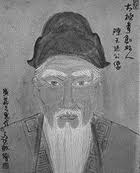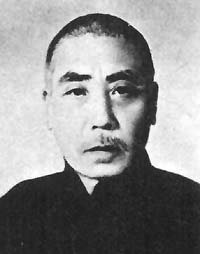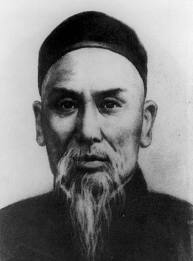Many people are fascinated with the mystical tai ji (tai chi) legend of the Taoist monk, Zhang San Feng, who allegedly invented tai ji quan (Tai Chi Chuan) through dreaming about or observing a fight between a snake and a crane in Wu-dang Mountains. Although there were historical implications and various circumstantial factors involved in the popularity of the Zhang San Feng legend, it is, for the most part, human nature to enjoy and believe in legendary stories. As filmmakers continue to make films with this half-legendary and half-fictional character, Zhang San Feng, based on the stories written by famous Chinese martial arts novelists such as Jing Yong, this legend will continue to live for centuries. People always enjoy passing on this kind of legendary story to future generations like the legends of King Arthur and Robin Hood.
Most of the practitioners’ unawareness of tai ji quan being an effective health exercise as well as an in-depth internal martial arts training can be explained in terms of Tai Ji Quan’s evolution and practice. After years of research and study of historical documents by tai ji practitioners and scholars, it is now believed that most of the major styles of Tai Ji Quan currently practiced (e.g., Chen, Yang, Wu as in Wu Yu Xiang, Wu as in Wu Jian Quan, Sun and He) were all derived, directly or indirectly, from Chen Family Tai Ji Quan. Their origins can be traced back to a small village located in Henan, China, with the name Chen Jia Gou, literally, Chen Family’s Ditch in the Henan province of China. Here is an excerpt from Chen Style Taijiquan: The Source of Taiji Boxing (Sim and Gaffney, 2002) “The birthplace of Taijiquan is commonly accepted to be Chenjiagou, in Wenxian, Henan province of China. There are many accounts of how Taijiquan came to be, some historical, some fictional, but the most recent and credible findings point to the Chen family.” Looking back through the generations of the Chen family lineage, several important figures rise to the fore in tracing the origins of Tai Ji Quan.
Chen Wang Ting 陈王庭 (1600 – 1800) 9th generation of the Chen family, was a warrior, a martial artist and a scholar. He has been credited as the inventor of Tai Ji Quan after a lifetime of researching, developing, and experiencing martial arts. He was renowned for his strength and his fighting skills. A born warrior and a master of martial arts, Chen Wang Ting served the Ming Dynasty in its war against the succeeding Qing Dynasty. Because of the political turbulence, natural disasters, and human calamities during his time, Chen Wang Ting’s ambition was not fulfilled. Shortly after the fall of the Ming dynasty, he retired from a military career and created a form of martial art based on his family martial arts inheritance, his own war experiences, and his knowledge of various contemporary martial arts styles, called “The First Method”.
In his creation of Tai Ji Quan, Chen Wang Ting combined the study of Yi Jing, (i.e., “Scriptures of Changes”), Qi Ji Guang,’s “Canon of Boxing” (a classic text on strategy and martial arts developed by the well-known general), Chinese medicine, theories of yin yang (i.e., the two opposing yet reciprocal energies generated from tai ji philosophy, expressed in tai ji quan as hardness vs. softness, substantial vs. insubstantial, etc.), the five elements (i.e., metal, wood, water, fire, earth), the study and theory of Jing Luo (i.e., meridian circulation channels along which the acupressure points are located), and methods of Dao Yin (i.e., channeling and leading internal energy) and Tu Na (i.e., deep breathing exercises). A poem written by Chen Wang Ting in his old age evidenced the significance of the Daoist methods of cultivating one’s energy and body in Chen Wang Ting’s reclusive life, “…Once bestowed upon with imperial favor and grace but all in vain, I, now old and feeble, was accompanied only by a scroll of ‘Huang Ting’ (i.e., a Daoist scripture detailing methods of Dao Yin and Tuna) by my side…”. In addition to these ancient Chinese internal theories, medicine, and Daoist methods, scholars (e.g., Hao Tang, Liu Xin Gu) had also discovered that the boxing art created by Chen Wang Ting contained names of twenty-nine postures of the thirty-two postures recorded in Qi Ji Guang’s Quan Jing Jie Yao Chapter (i.e., Chapter on the Quick and Outlined Scriptures of Boxing, Scroll 14) in Qi’s Ji Xiao Xin Shu (i.e., New Book of Illustrated Recordings on Effectiveness). Moreover, besides the connection between Qi Ji Guang’s Quan Jing Jie Yao Chapter and Chen Wang Ting’s bare-hand forms, all the long spear posture names mentioned in Qi Ji Guang’s Chang Bing Duan Yong Talk (Talk on Long Weapon in Close-Contact Use, Scroll 10) in Ji Xiao Xin Shu could also be found completely incorporated in the posture names of the Chen Family Spear Set. Therefore, after other popular theories–some fabricated for political or self-expedient purposes–regarding the origin of Tai Ji Quan, e.g., the Zhang San Feng legend, the Wang Zong Yue (whose Tai Ji Quan Lun, i.e., Tai Ji Quan Theory, was frequently quoted as one of the classics in the study of Tai Ji Quan)/Jiang Fa theory, etc., have all been refuted and found either unsubstantiated historically or contradictory chronologically with historical facts, scholars had concluded that Chen Wang Ting was the one who created and developed totally new and different boxing and weapon set movements, postures, and applications in his own martial arts system possibly with the inspiration of the names from Qi’s book, which was in turn a digested record of names, forms, and postures from many martial arts schools in Qi’s time (Tang, H. & Gu, L., 2004). In this unique and unprecedented martial arts system, Chen Wang Ting created and invented seven sets of empty-hand forms, a long fist form of one-hundred-and-eight postures, one Pao Chui (i.e., Canon Fist) set, push-hand techniques for two people, and training methods for spear, saber, sword, truncheon, jian, spear-thrusting for two people, and long-pole (Gu, L., 1983; Chen, Q., 2002).
Chen Chang Xing 陳長興 (1771-1853) of the 14th generation Chen patriarch, was the first to teach Chen Style Tai Ji Quan to an outsider, Yang Lu Chan (1799-1872). He is given credit for synthesizing the forms created by his ancestors. Lao Jia Yi Lu and Lao Jia Er Lu are the results of this synthesis, two all-inclusive forms that preserve many of the original postures and respect all of the principles of the original forms of Chen Wang Ting. This was a turning point in the evolution of Tai Ji Quan since all other forms of tai ji quan were derived from the original form of Lao Jia Yi Lu. Historically, this skill was a closely guarded family secret and Chen Chang Xing was the first of the family to open the door to this knowledge to an outsider. Yang Lu Chan a visiting student of Chen Chang Xing, after persistent requests, gained permission to learn the Chen family style. Yang was instructed to never teach Chen style to the public. Hence, in order to honor his promise, Yang revised the form and named his version of the tai ji quan, Yang Style Tai Ji Quan.
Chen Fa Ke 陳發科 (1887-1957), the great grandson of Chen Chang Xing created the Xin Jia (new frame, ironically is not newer than Lao Jia) which is widely practiced in the world today. Xin jia combined the elements of Laojia Yi Lu and Lao Jia Er Lu, added moves, and incorporated more complex silk reeling (chan si) and explosive discharges (fa jing). Chen Fa Ke enhanced the fighting applications and made the form more efficient in practical use. These same changes were then applied to Lao Jia Er Lu. Chen Fa Ke taught Chen Style Tai Ji Quan in Beijing for nearly 30 years, bringing Chen family style into public awareness.
Yang Lu Chan 杨露禅 (1799-1872), was the first outsider to learn the Chen Family Tai Ji Quan. He vowed to his master to never teach tai ji quan to the public or use its name before he was taught the Chen family martial art. Yang later traveled to Beijing and became known as “Yang the Invincible.” True to his oath, Yang formulated his own Tai Ji Quan form based on Chen Family Tai Ji Quan first form (Lao Jia Yi Lu) and became the founder of Yang Tai Ji Quan. Another possible reason for Yang Lu Chan to formulate his own Tai Ji Quan form might be due to the fact that during those days, the Yang family was employed by the Manchu rulers of the Qing Dynasty to manage the practice and teaching of war. As Manchus were considered the oppressive foreign rulers by the people in their sovereignty (i.e., the Han people), the Yang family probably decided to teach the Manchus only the boxing form, but not the boxing methods nor its applications. Manchus were taught to be soft as cotton so they would not use tai ji quan to attack or kill. Direct Yang family members and close disciples, on the other hand, were secretly taught both the hard and soft aspects of Tai Ji Quan. Yet, the soft Tai Ji Quan form started to gain its popularity and gradually Tai Ji Quan was recognized and associated with the soft form while people in Chen Village continued to practice both the soft and the hard forms. It’s also uncertain when the name “Tai Ji Quan” was given to this Chinese martial arts system. It’s very likely that there was no name for Tai Ji Quan when Chen Wang Ting initially developed this martial arts system because he meant to pass it down to his descendant. It is common for a Chinese family to develop their own style of martial arts. These arts then become known as the style of the family. Chen Wang Ting didn’t know the martial arts system he created would one day become one of the most popular health exercises in the world. The name Tai Ji Quan was given later possibly because this unique martial arts system was created based on the principles and theory of Tai Ji, “Grand Ultimate or Extreme” yin and yang reaching the ultimate balance and regenerating from each other. Today there are five major popular styles evolved and developed with individual variations and transformations from the original boxing art created by Chen Wang Ting (Gu Liuxin, 1983; Chen Qingzhou, 2002):
1) Chen Style: Various Chen styles–including Da Jia (Big Frame), Xiao Jia (Small Frame), Lao Jia (Old Frame), Xin Jia (New Frame), etc.–are continued to be practiced by Chen Family descendants and disciples. It is generally characterized by fast-slow, soft-powerful, and up-down spiral movements with jumping, punching, and qin na. It contains two basic empty-hand forms. The first form is soft and slow, also known as Yi Lu (First Form), while the second form is powerful and fast, also known as Er Lu (Second Form) or Pao Chui (Canon Fist). The Da Jia system, which Chen Chang Xing taught to his descendants and students, is commonly referred to as “Lao Jia”. A modified “Lao Jia” system, which Chen Fake and his second son, Zhao Kui, taught in Beijing, is known to be the seed of Xin Jia (of the original Da Jia). The modified “Lao Jia” system (Xin Jia) has more obvious coiling, spiraling, and large circular movements when compared with Lao Jia, which has a more direct martial arts approach with smaller and more subtle circles. Currently, the Xin Jia system is still undergoing the process of being modified and changed. Chen Zhao Pi, a nephew of Chen Fake, insisted on maintaining and preserving the original postures and sequence of the Lao Jia system and passed this unmodified system to his students and descendants. One of his disciples, Chen Qing Zhou, has taught the Lao Jia system unchanged and without any influence of Xin Jia. However, his other disciples including famous Chen descendants such as Chen Xiao Wang and Chen Zheng Lei also learned Xin Jia from Chen Zhao Kui.
2) Yang Style: It is characterized by slow and even expansive tempo movements. This style was developed by Yang Lu Chan based on Da Jia Yi Lu (Big Frame First Form), which he learned from Chen Chang Xing. This “unchanged” Da Jia system which Chen Chang Xing taught Yang Lu Chan and his descendants are commonly referred to as Lao Jia (Old Frame). It is known that Yang Lu Chan and his sons never taught Er Lu (Second Form) openly to the public; rather, it was passed down only to Yang’s own family descendants and a few close indoor disciples.
3) Wu (as in Wu Yu Xiang/Hao): It is characterized by a small and compact frame, soft and slow tempo with upright postures and the tailbone tucked forward. This style was developed by Wu Yu Xiang also from Da Jia Yi Lu (Big Frame First Form), which he learned from Yang Lu Chan, and from Xiao Jia (Small Frame), which he learned from Chen Qing Ping (also known as Zhao Bao Jia). Hao Wei Zhen of Wu Taiji lineage later taught Sun Lu Tang, who developed another branch of tai ji quan styles, which is now called Sun Style.
4) Wu (as in Wu Jian Quan): It is characterized by gentle and slow movements like the Yang style, but with tight, compact, and apparent leaning postures. This style was developed by Wu Jian Quan, who learned from his father Quan You. Quan You, a Manchurian, learned his tai ji quan from both Yang Lu Chan and his son Yang Ban Hou, whose style was described as more compact and less expansive (i.e., Xiao Jia) in comparison with the Yang styles practiced by Yang Lu Chan and Yang Cheng Fu.
5) Sun Style: It is characterized by a high stance with fast paces and a unique dexterous, tight, and compact style. This style was developed by Sun Lu Tang based on the tai ji quan he learned from Hao Wei Zhen and his earlier Xing Yi and Ba Qua training.
For generations, the practice of Tai Ji Quan has been compromised to the extent that it has lost its original essence. Of the major styles practiced today, Chen family Tai Ji Quan continues to offer the most complete training system including qigong, empty-hand forms, silk-reeling exercises, push-hand practice, weapon sets, etc. It has gone through the least amount of change as a martial art and preserved most of the training methods as well as some of the most unique training tools (e.g., Tai Ji Ruler, Tai Ji Sphere or Ball, etc.). Therefore, although a person is not required to be athletic in order to learn Chen Style Tai Ji Quan, patience, consistent practice, and time commitment are essential for a Chen Styles Tai Ji Quan learner to truly benefit from this ancient internal martial arts system. Beginning students usually start with Yi Lu, qigong, and silk-reeling exercises to help them establish a strong foundation and to prepare them if they wish to continue and further pursue the martial aspects of the system. It is hoped that through the promotion of Traditional Chen Style Tai Ji Quan, the public will again recognize Tai Ji Quan not only as a health exercise, benefiting both mental and physical health, but also a truly valuable Chinese martial arts system.
All credit for this write-up goes to the author of the article. While I have combined information from various sources to create this information, I claim no rights to this information.
References
Chen Style Taijiquan: The Source of Taiji Boxing (Sim and Gaffney, 2002)
http://chenfamilytaiji.com/taiji_history.html.
http://www.nickgudge.ie/2.b.-brief-history-taijiquan.html
Various Wikipedia pages and internet searches





